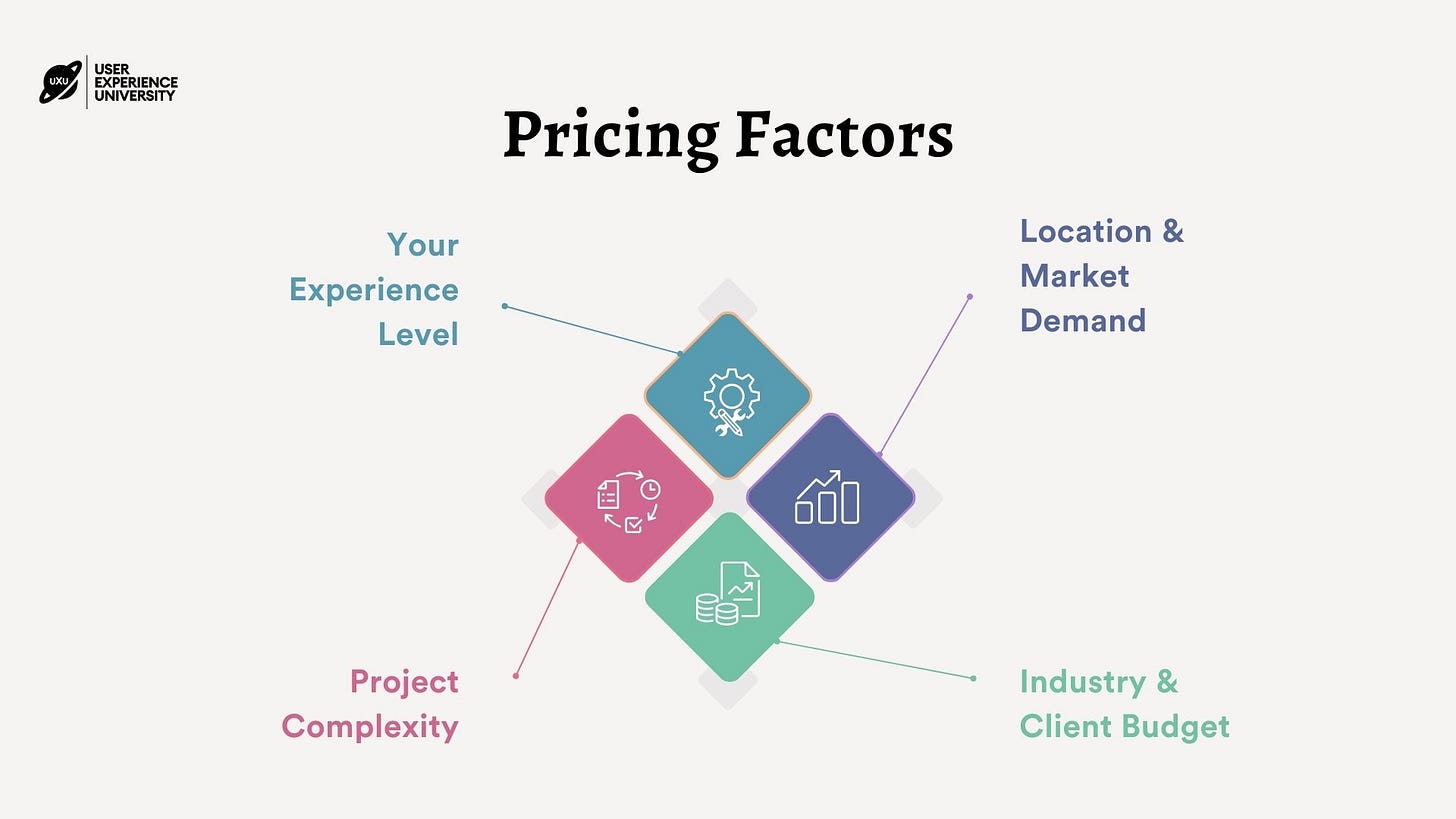The UX Pricing Dilemma: Are You Charging What You're Worth?
💰 Charging Too Little? Here’s How to Price Right
One of the biggest challenges UX professionals face—whether freelance, in-house, or consulting—is determining the right price for their work. Charge too little, and you undervalue your expertise. Charge too much, and you risk scaring off potential clients or employers.
So, how do you strike the right balance?
Key Insight: Understanding UX Pricing Models
Market Insights: UX Pricing Trends & Benchmarks in 2024
How to Price Your Work: Factors Like Experience, Complexity & Market Demand
Upcoming Workshop: Join Kevin Liang at UXCON
Resource Corner: Salary Surveys, Proposal Templates & Time-Tracking Tools
Tool of the Week: Payscale – Get Personalized Salary Reports & Market Trends
There’s no one-size-fits-all approach to pricing UX work. Here are some common models to consider:
📌 Hourly Rate – Best for short-term projects, workshops, or advisory work. The global median freelance UX designer hourly rate is $75-$100/hour (Interaction Design Foundation, 2024).
📌 Project-Based Pricing – Ideal for end-to-end projects with clear deliverables. A UX research project can range from $3,000 to $20,000+ depending on scope and expertise (NN/g).
📌 Retainer Model – Charge a recurring fee for ongoing UX support. This model is common for UX strategists and senior consultants who provide continuous insights. Average Retainer is about $5,000–$15,000 per month.
Factors to Consider When Pricing
Your Experience Level – Junior designers typically start at $40-$60/hour, while senior professionals command $100-$250/hour (UXPA Salary Survey).
Project Complexity – User research, strategy, and service design often command higher rates than visual/UI design.
Industry & Client Budget – Tech start-ups and SaaS companies pay more than non-profits or small businesses.
Location & Market Demand – Remote work has shifted pricing dynamics. Designers in North America or Western Europe generally earn higher rates than in other regions.
But how do you know what YOU should charge?
How to Confidently Price Your UX Work
Calculate Your Minimum Rate
Factor in your expenses (Consider all the costs associated with running your UX business), time, and desired salary.Know Your Market Worth
Research industry benchmarks (also compare rates with fellow UX professionals) and charge for value, not just hours. Companies expect to negotiate, so always price 20-30% higher than your target rate.Set Tiered Pricing
Explore offering multiple packages (e.g., Basic, Premium, and VIP) so clients can choose without feeling sticker shock.Communicate Your Pricing Clearly & Master the Art of Negotiation
Transparency is key to building trust with clients. When presenting your rates:Break down the costs (e.g., research, design, testing).
Explain the value they’ll receive.
Be prepared to negotiate, but know your bottom line
📢 Pro Tip: Silence is your secret weapon. When negotiating, say your rate and pause—most clients will respond with a counteroffer, not a rejection.
Join Kevin Liang, founder of Zero to UX, will be at UXCon25!
With 14+ years of research experience at Google, Uber, and Volkswagen, Kevin has launched 80+ products, secured patents, and mentored countless UX researchers.
But more than that—he’s passionate about helping people find their path in UX. His session at UXCon25 will leave you inspired, informed, and ready to take action.
Don’t miss it! See you at UXCon25.
📖 Recommended Resources
Reports:
UXPA Salary Survey 2024 (Industry insights and salary benchmarks)
UX Designer Salary Explorer by UXcel
Tools:
Proposal Templates: Use platforms like Bonsai or HoneyBook to create professional proposals.
Time Tracking Software: Tools like Clockify or Harvest can help you track your hours accurately.
Tool of the Week: Payscale – Know Your Worth
Here’s how Payscale can help you:
Generate personalized salary reports.
Compare your compensation to industry benchmarks.
Access market trends in real time.
[Remember]Adjust as You Grow
Your pricing should evolve as you gain experience and expand your portfolio. Regularly reassess your rates to ensure they reflect your current skills, market demand, and the value you provide.
Tip: Don’t be afraid to raise your rates for new clients while grandfathering existing ones at their current rate.







